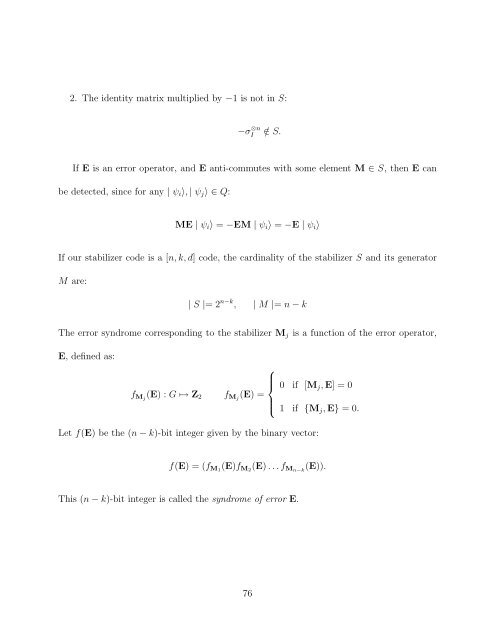t b a b a
t b a b a
t b a b a
Create successful ePaper yourself
Turn your PDF publications into a flip-book with our unique Google optimized e-Paper software.
2. The identity matrix multiplied by −1 is not in S:<br />
−σ ⊗n<br />
I<br />
If E is an error operator, and E anti-commutes with some element M ∈ S, then E can<br />
be detected, since for any | ψi〉, | ψj〉 ∈ Q:<br />
/∈ S.<br />
ME | ψi〉 = −EM | ψi〉 = −E | ψi〉<br />
If our stabilizer code is a [n, k, d] code, the cardinality of the stabilizer S and its generator<br />
M are:<br />
| S |= 2 n−k , | M |= n − k<br />
The error syndrome corresponding to the stabilizer Mj is a function of the error operator,<br />
E, defined as:<br />
fMj (E) : G ↦→ Z2 fMj<br />
⎧<br />
⎪⎨<br />
(E) =<br />
⎪⎩<br />
0 if [Mj, E] = 0<br />
Let f(E) be the (n − k)-bit integer given by the binary vector:<br />
1 if {Mj, E} = 0.<br />
f(E) = (fM1(E)fM2(E) . . . fMn−k (E)).<br />
This (n − k)-bit integer is called the syndrome of error E.<br />
76

















